Be Prepared for These 5 Common Weather Hazards
No matter where you are or where you’re going, the weather is always a factor, and the weather can always change. This is especially true in spring, when Earth tilts closer to the sun (in the Northern Hemisphere), the days get longer and temperatures get warmer.
If you’re hiking in a dry area, there’s always a chance of afternoon showers.
If you’re hiking up a mountain, the temperature at the top might be completely different than the temperature at the bottom.
Be Prepared by knowing how to handle sudden changes in weather.
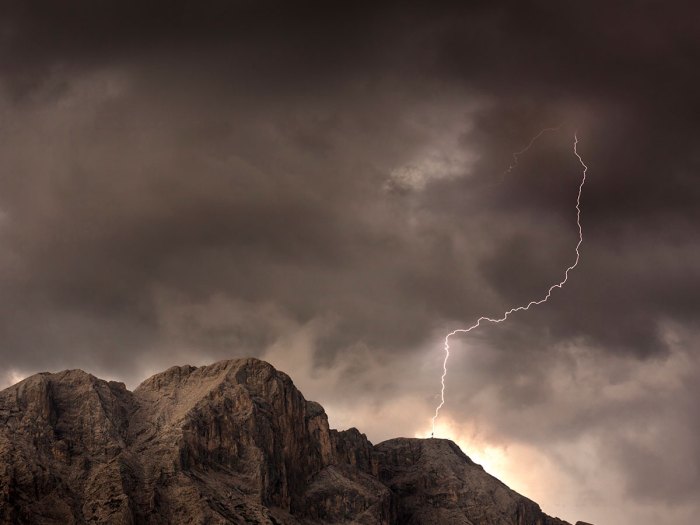
THUNDERSTORMS
Thunderstorms occur when warm, moist air creates updrafts that form extra large raindrops. Lightning happens when positive and negative electrical charges separate, build up and then discharge in different parts of the clouds and on the ground beneath the clouds.
Some lightning strikes the ground, but most of it jumps the gap from one part of a cloud to another.
There is no safe place outside in a thunderstorm. You are better off walking to a car or building than risking staying outside. When thunder roars, go indoors and wait at least 30 minutes after the storm has passed before going back outside.
If you are caught outdoors in a thunderstorm, do not stand in open areas or near lightning targets such as trees, power poles or wire fences. Metal conducts electricity, so also stay away from metal poles (such as tent poles). Remove any metallic frame packs, and do not stay near them.
Water also conducts electricity, so if you are boating or swimming, get to land immediately when a storm is approaching. If you are hiking at high altitude, descend to a lower elevation as quickly as possible.
If a lightning storm catches your group in the open, spread out with each person at least 100 feet from anyone else.
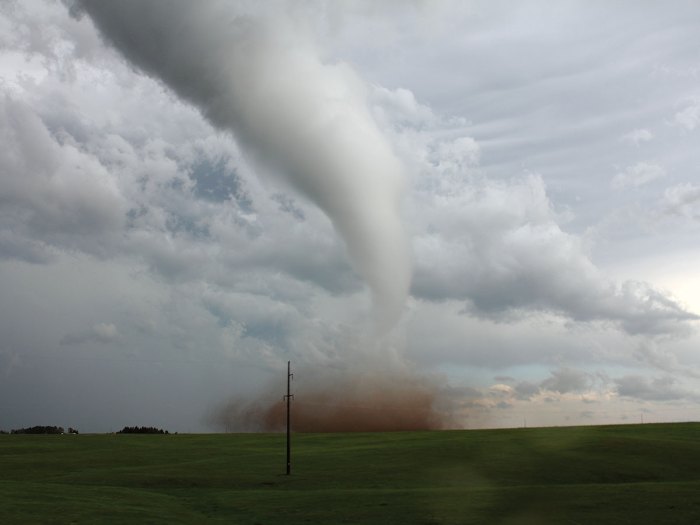
TORNADOES
A tornado can form when a weather system of hot, dry air collides with a warm, moist front. Tornadoes are violent storms with winds of up to 300 miles per hour.
Most tornadoes last a few minutes and produce paths of damage only a few hundred yards wide. Some rare tornadoes, however, are more than a mile wide and last much longer.
Weather bureaus issue watches when conditions are right for tornadoes and warnings when they have been sighted. Pay attention to changes in the sky, including:
- dark clouds sometimes tinged with green;
- heavy rain and hail;
- a funnel-shaped cloud descending from the clouds above;
- a roaring noise similar to that of a freight train.
Most tornado casualties are caused by flying debris. If you are caught in the open when a tornado approaches, get to a low spot, lie face down and cover your head. A ditch or other low spot is a good place to lie down if there is no floodwater.
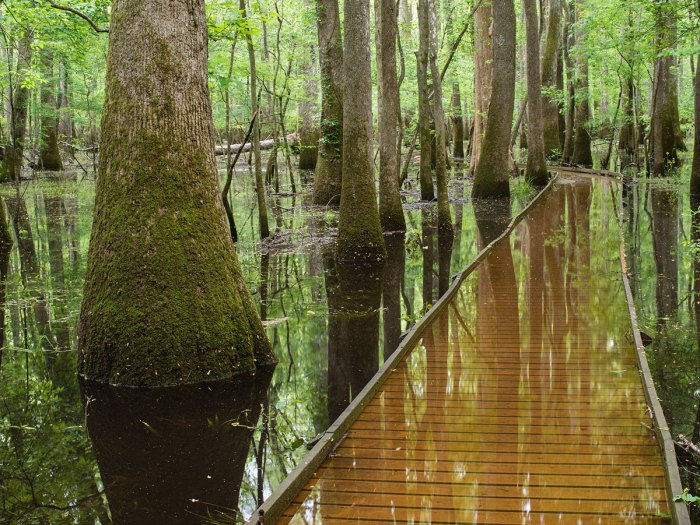
FLOODS
Some floods occur when winter or spring rains combine with melting snows to fill river basins with too much water, a process that takes several days.
Flash floods occur when a storm turns dry streambeds and small creeks into rushing torrents in just a few minutes. If you camp on low ground, you might be caught by surprise, especially when asleep at night.
When traveling where flash floods are possible, be aware of routes you can use to reach the safety of higher ground. Pitch your tents above the high-water marks of past floods.
If you are caught in a flood, float on your back with your feet aimed downstream, and use them to push off boulders and other obstacles. If you are able to reach higher ground, stay calm and wait for help to arrive.
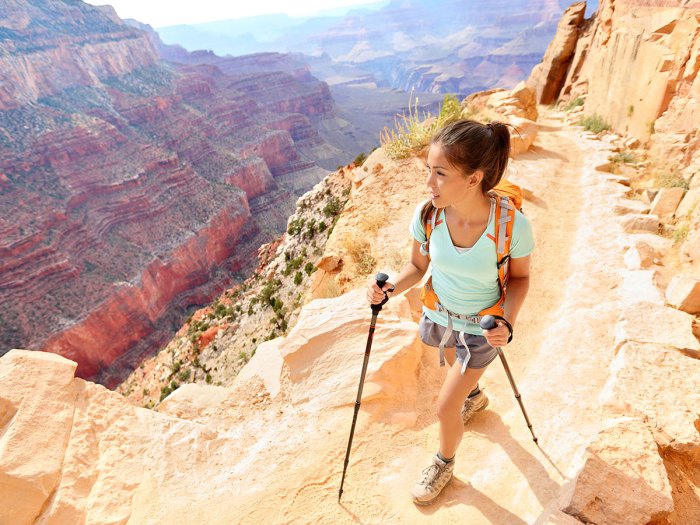
HEAT
In many parts of the country, the temperature can rise quickly and dramatically in the spring. It could be 60 degrees and rainy the day you leave for the trail, and then 85 degrees and sunny two days later.
Check the forecast and pack accordingly. Plan ahead so you know when and where you can refill your supply of water.
Take it easy during the hottest part of the day, and rest often in shady areas. Keep an eye on your companions to see how they are coping with the conditions. If anyone is having trouble, get them to a shady spot and have them drink plenty of water.
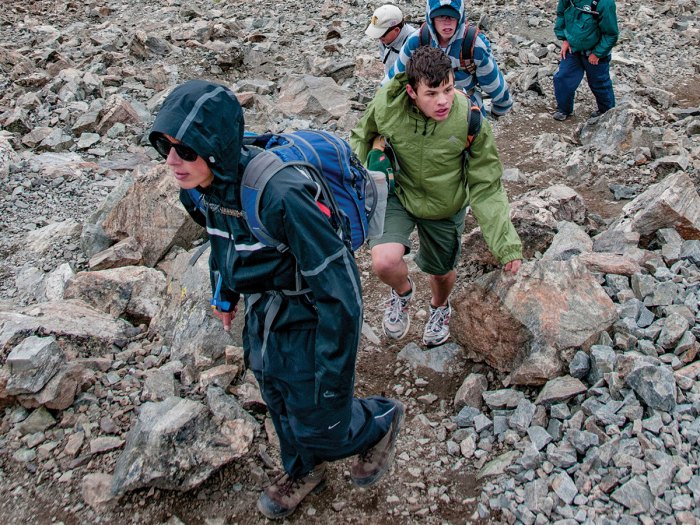
COLD
Just as it can get hot quickly, it can cool down fast in the spring — especially if the trail leads to a significant altitude change. A warm hike in shorts and a cotton T-shirt can turn dangerous quickly after a rainstorm and cool front move through the area.
Always carry rain gear, even if the chance of rain is slim. Wear non-cotton clothing so you can stay warm even if you get wet. And be on guard for hypothermia, which can be a threat even in mild temperatures if you get cold and wet with no way to dry off and warm up.
If you or one of your buddies starts to shiver, get them some warm, dry clothes as soon as possible. Offer warm liquids if available; otherwise, make sure they stay hydrated.
THE BSA’S HAZARDOUS WEATHER ONLINE TRAINING PROGRAM is available to anyone age 13 and up. Take it for free in the BSA Learn Center section of my.scouting.org. (You’ll need to create a free account if you don’t already have one.)
Watches and Warnings
The best way to avoid weather emergencies is to watch the weather. It’s great to leave your electronic devices at home, but somebody needs to keep an eye on the short-term weather forecast when you’re spending multiple days in the backcountry.
Forecasters with the National Weather Service issue watches and warnings to alert the public to potentially violent or hazardous weather.
A WATCH means hazardous weather is possible or conditions are favorable for it to develop.
A WARNING is a more urgent notice that hazardous conditions already exist or are heading your way.
Leave a Comment